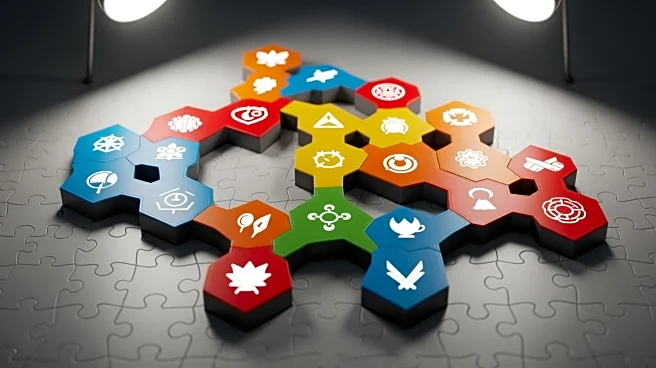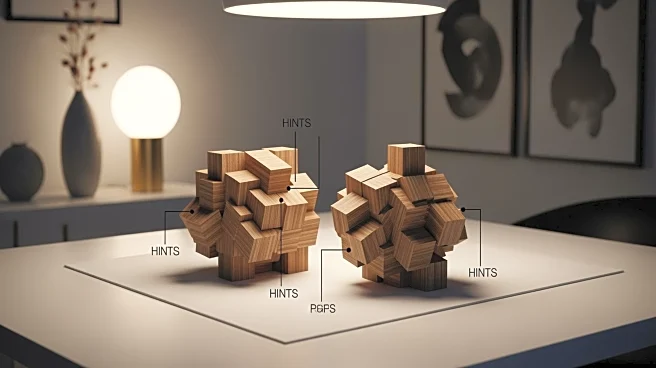What's Happening?
CNET has released hints and answers for the New York Times Strands puzzle dated November 9, 2025. The puzzle, known for its challenging word unscrambling tasks, features a theme titled 'How enchanting!'
and includes a spangram, which is a word that spans the entire puzzle grid. The spangram for this particular puzzle is 'CHARMEDIMSURE.' CNET's coverage includes detailed explanations of the puzzle's rules and provides clues to assist players in solving the puzzle. The article also offers guidance for other popular puzzles such as Wordle, Connections, and the Mini Crossword, which are part of the New York Times' daily puzzle offerings.
Why It's Important?
The New York Times puzzles, including Strands, have become a staple for many puzzle enthusiasts, offering daily mental challenges that engage a wide audience. CNET's provision of hints and answers helps players who may struggle with the complexity of these puzzles, enhancing their experience and encouraging continued participation. This support can lead to increased engagement with the New York Times' puzzle section, potentially boosting its readership and maintaining its reputation as a leading source of intellectual entertainment. Additionally, CNET's involvement underscores the importance of tech and media platforms in providing accessible content and support for popular cultural activities.
What's Next?
As puzzles like Strands continue to gain popularity, it is likely that more media outlets will offer similar support and coverage, potentially expanding their audience reach. The New York Times may also continue to innovate its puzzle offerings to keep them fresh and engaging for its audience. This could include introducing new puzzle types or themes to attract a broader demographic. Furthermore, the collaboration between tech platforms like CNET and traditional media outlets could lead to more integrated content strategies, enhancing user engagement across different platforms.
Beyond the Headlines
The growing interest in puzzles like Strands reflects a broader cultural trend towards activities that promote cognitive engagement and relaxation. As digital media continues to evolve, the integration of traditional puzzles with online platforms may offer new opportunities for interactive and community-driven experiences. This trend could also influence educational approaches, encouraging the use of puzzles as tools for learning and development in various settings.











